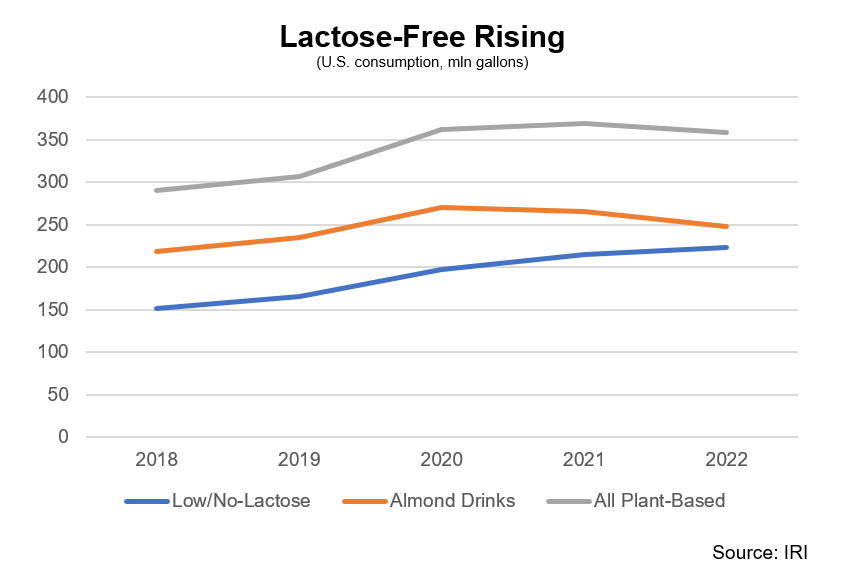After more than 150 meetings of our dairy farmer members and co-op technical experts. After extensive outreach and consultation with national organizations, including the American Farm Bureau Federation and state and regional dairy associations. And after multiple unanimous votes at all levels of our organization, NMPF this month will submit to USDA our proposal for the first significant update of the Federal Milk Marketing Order system since 2000.
All those meetings, as well as the preparation and examination that accompanies them, add up to many hours and an incredible amount of analysis on Federal Milk Marketing Orders. But by doing the heavy lifting – one that understands and accounts for the reality that a change to one part of the system affects other important parts — we at the National Milk Producers Federation feel confident in the comprehensive proposal our Board of Directors unanimously approved last month.
While the process of a USDA FMMO hearing and a referendum vote by producers will take some time, we’ve already come a long way toward achieving improvements to milk pricing that will modernize this important program. Through our proposal, dairy farmers have found common ground, and we believe the broader dairy sector can rally around these efforts to strengthen our industry. Important components of our proposal include:
- A return to the “higher of” Class I mover that’s fairer for farmers than the current system that seemed reasonable when it was included in the 2018 Farm Bill, but which the COVID-19 pandemic showed exposes farmers to disproportionate price risks during market disruptions;
- Updated milk component factors for protein, other solids and nonfat solids in the Class III and Class IV skim milk price formulas, recognizing that these components have increased in the U.S. farm milk supply since the current formulas were established;
- Specific make allowance adjustment numbers for the four products contained in the Class III/IV pricing formulas – cheese, dry whey, butter and nonfat dry milk – to help address increases in processing costs, as well as creating a mechanism to keep those calculations up-to-date; and
- Updated Class I differential prices that reflect changes in the cost of delivering bulk milk to fluid processing plants.
This is difficult work, and at times it’s involved difficult conversations. But the alignment we’ve achieved among farmers, cooperatives and the cooperative-owned processing community has been one of the most critical, and gratifying, parts of the process.
An important principle we’ve followed is that, while building consensus, we’ve recognized that we can’t craft solutions that are one-size-fits all, nor can any proposal succeed when it’s narrowly tailored to what amounts to one-size-fits-one. What do I mean by that? As we quickly learned when we first started looking at federal reform in 2021 with a re-examination of the Class I Mover, a narrowly targeted approach doesn’t work when there are other major imbalances in the system.
In the end, we didn’t pursue Class I alone because we found serious modernization required a serious look at all aspects of federal milk marketing orders and their complex interactions. Now that we’ve done exactly that, we are hoping the industry can broadly rally around the conclusions at which we’ve painstakingly arrived. We owe it to this industry – and especially to the farmers who are at the heart of it – an honest, deliberative, thorough approach that creates opportunities for everyone to thrive.
Our proposal has come after discussions that reflect the great diversity of this industry. We’ve been transparent, driven by an interest in the industry’s overall success, and we aren’t afraid to lay our cards on the table with specific numbers and forecasted impacts. On the make allowance, for example, the majority of our farmers are members of cooperatives that own dairy processing plants; therefore, they have a vested interest in setting the make allowance at the right level — from both the producer and processor perspective. That balance, which runs throughout our proposal, is what is needed to modernize this important program.
After leading the most comprehensive discussion of federal orders this industry’s seen in the past quarter-century, we’re confident we’ve crafted solutions that all of dairy should get behind – with the unanimous approval our board gave to it in March as evidence of our hard work and dedication to consensus. We are heartened by the strong support among dairy farmers from coast to coast for this proposal. A comprehensive, thoughtful, measured, farmer-centric approach to modernizing the program is exactly what USDA should consider as the basis for a national federal order hearing, and we are proud to offer it.
To better understand our proposal, please explore our website at www.nmpf.org. We of course encourage feedback and any helpful comments that should be considered when finalizing our submission, which is currently under way. To reach out to us with questions as we move toward a federal hearing, feel free to write us at info@nmpf.org.
We’re looking forward to advancing this industry in collaboration and partnership. As the national organization representing most of the dairy producers who, in the end, are the ones voting on any changes to the FMMO system, we take our responsibilities seriously. And we look forward to discussing and advocating for our proposal as this critical next phase begins.

Jim Mulhern
President & CEO, NMPF








